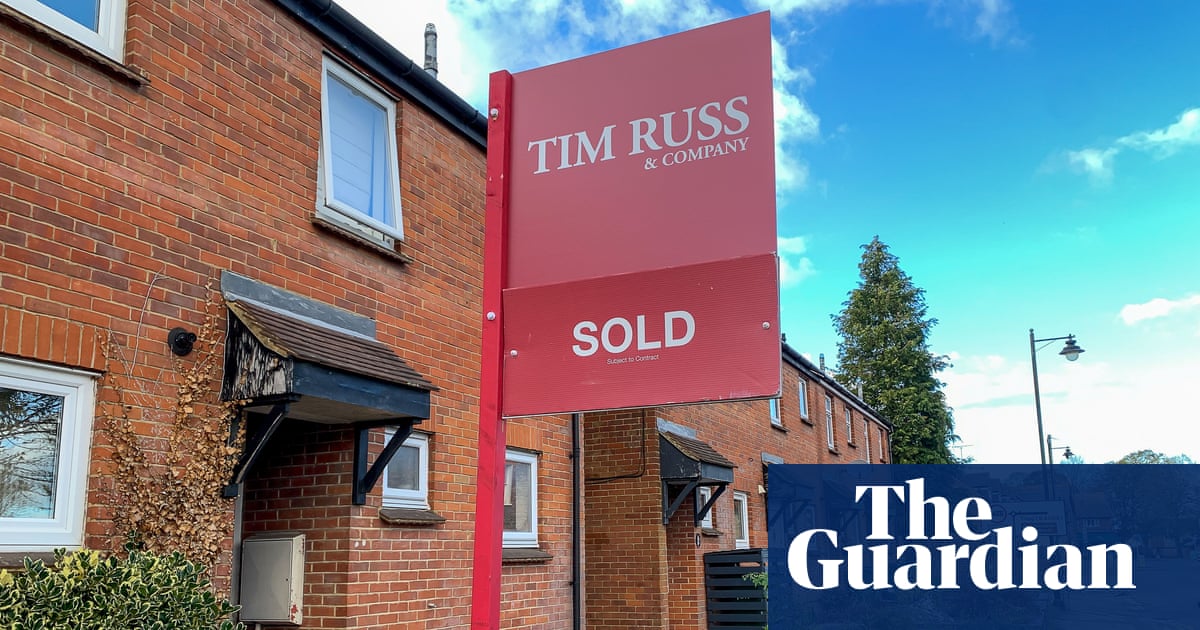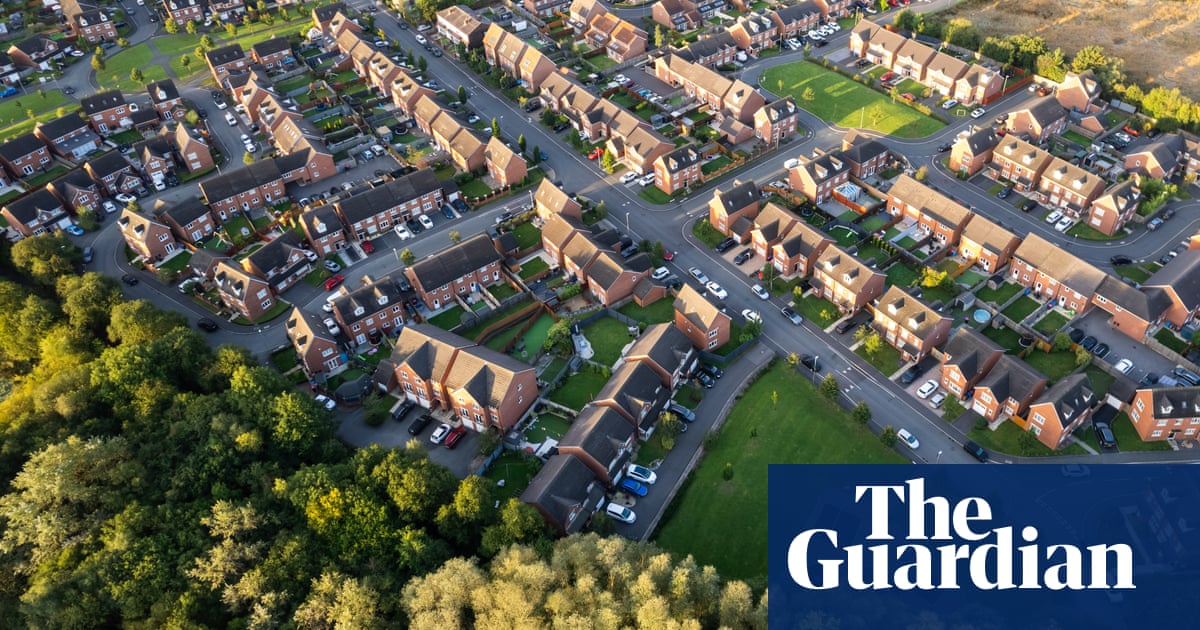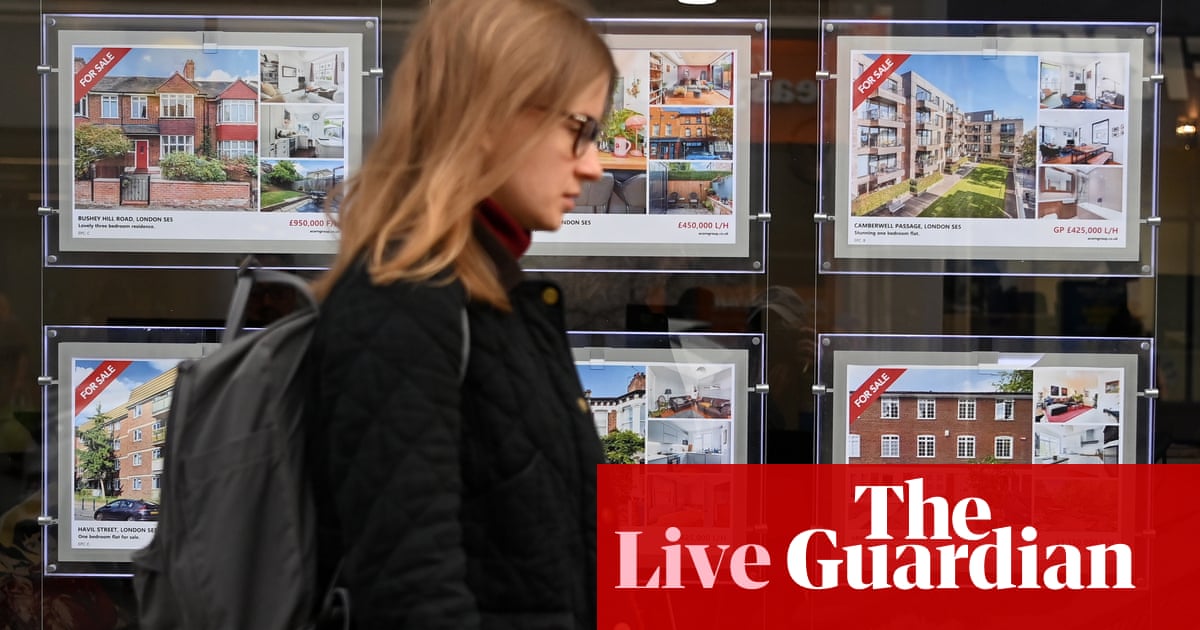
House prices in the UK were steady in April after falling in March, as higher mortgage rates prompt first-time buyers to go for smaller properties, according to the mortgage lender Halifax.
The price of a typical home rose by less than £200 last month to £288,949, a 0.1% monthly gain, compared with a 0.9% drop in March, which was the first decline in six months. On an annual basis, prices rose 1.1% in April, up from March’s rate of 0.4%, largely because there was weaker price growth this time last year, Halifax said.
“The reality is that average house prices have largely plateaued in the early part of 2024,” said Amanda Bryden, the head of mortgages at Halifax. “This reflects a housing market finding its feet in an era of higher interest rates. While borrowing costs remain more expensive than a few years ago, homebuyers are gaining confidence from a period of relative stability.”
She said buyers were adjusting their expectations, and first-time buyers in particular were compensating for higher borrowing costs by targeting smaller properties. This was reflected in property prices for the first few months of this year, where the value of flats rose most sharply, closing the “growth gap” on bigger properties that has existed for most of the past four years.
Bryden said activity and demand were improving and mortgage approvals reached their highest point in 18 months. However, affordability remained a problem for first-time buyers and those rolling off fixed-term mortgage deals.
Mortgage rates have edged up again in recent weeks, as financial markets price in a slower pace of interest rate cuts from the Bank of England. A first cut in August is now priced in, and another one is expected later in the year.
The average two-year fixed residential mortgage rate is 5.93%, while the average five-year fix is 5.5%, according to the financial data provider Moneyfacts. This compares with an average two-year fix of 5.78% and a five-year fix of 5.34% two months ago.
Bryden said: “If, as is still expected, downward moves in Bank rate come into play later this year, fixed mortgage rates should fall. Combined with the resilience displayed by the housing market over recent months, we now expect property prices to rise modestly over the course of 2024.”
The property company Savills has reversed its prediction of a fall this year in UK house prices made in November, saying it now expects the average price to rise by 2.5% in 2024.
Jeremy Leaf, a north London estate agent, said: “We are not surprised to see house prices up a bit, then down a bit – a pattern which we are finding is repeated on the ground, reflecting that some sellers are more realistic than others.
“The market has lost a little momentum in the last month or so, which has chimed with recent modest increases in mortgage rates as well as listings. However, underlying confidence remains fairly strong for now at least, allowing purchasers the opportunity to perhaps negotiate a little harder where possible.”
Separate survey results on Tuesday showed UK construction output rose to its highest level in more than a year in April, despite a sluggish performance by housebuilders.
The latest health check from S&P Global said weak demand and high borrowing costs explained the drop in housebuilding last month, but said the performance by the two other segments of the construction sector – commercial and civil engineering – had been stronger.
Overall, the construction sector purchasing managers index rose from 50.2 in March to 53.0 in April, its highest level since February 2023, after the fifth monthly increase in a row. A reading above 50 indicates output is growing.
Tim Moore, the economics director at S&P Global Market Intelligence, which compiled the survey, said: “The construction sector consolidated its recent return to growth in April, with total industry activity rising at the fastest pace for 14 months amid an ongoing recovery in order books. Demand was boosted by greater confidence regarding the broader UK economic outlook.
“Commercial construction outperformed in April and civil engineering also provided a solid contribution to overall growth. Lacklustre market conditions in the housebuilding segment continued to weigh on activity.”












